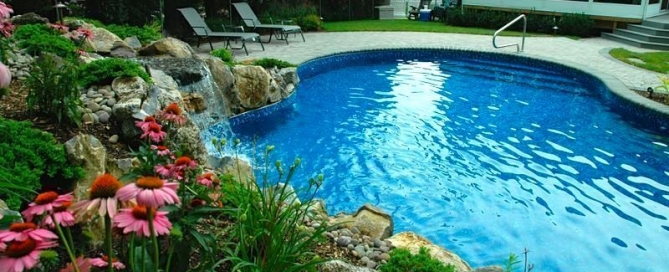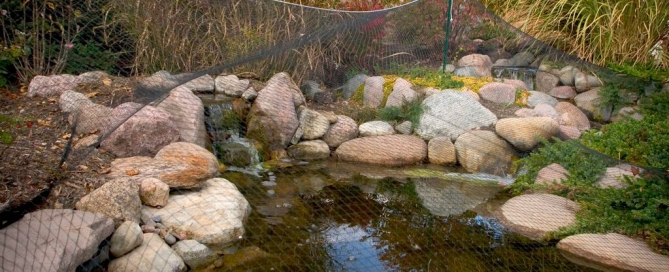All Decking Aside…Where’s the Pool Going to Go?
The owners of this relatively small Nassau County (Long Island/NY) property approached Deck and Patio’s Outdoor Living Expert, Bill Renter, for a new deck. They also shared their dismay at having been told by other firms that their backyard terrain would not allow for the construction of a pool.
As Bill discussed plans for renovating their existing natural wood deck into Trex decking, they were delighted by his assurance that a pool would not be impossible at all; it just would take a bit of creative design.
The major issue with their property was that it inclined toward the house. Other impediments included restrictive Town setbacks. Deck and Patio tackled these issues by setting the pool mid-grade, and building risers up to the pool height.
In addition, we built the attractive water feature behind the pool to deal with the rising higher grade, as well as to screen out the neighbors — all while maintaining a natural and beautiful scene.
And “pool aside,” the beautiful Trex decking and Cambridge patio and pool surround are pretty special, too.
By choosing a vinyl-lined pool, which can be constructed in any shape, curve, or angle, this allowed for great flexibility in design. Plus, the homeowners were not stuck with unattractive white interior stairs that wouldn’t blend with the rest of the pool, nor did they sacrifice a smooth bottom for the swimmers’ feet.
Deck and Patio also surrounded the pool with a patio created from Cambridge’s Round Table pavingstones. The pavers’ dimpled, embossed surfaces gently roll into soft, beveled edges on four straight-sided Cambridge Shapes with ArmorTec. The pavers were laid in a modified herringbone pattern.
Bluestone stepping stones skim across the backyard sod and connect the pool patio to the deck and patio at the house, which is also home to the outer kitchen area, complete with BBQ and refrigerator. The entire project was finished off with the installation of lush colorful landscaping and low voltage lighting.











